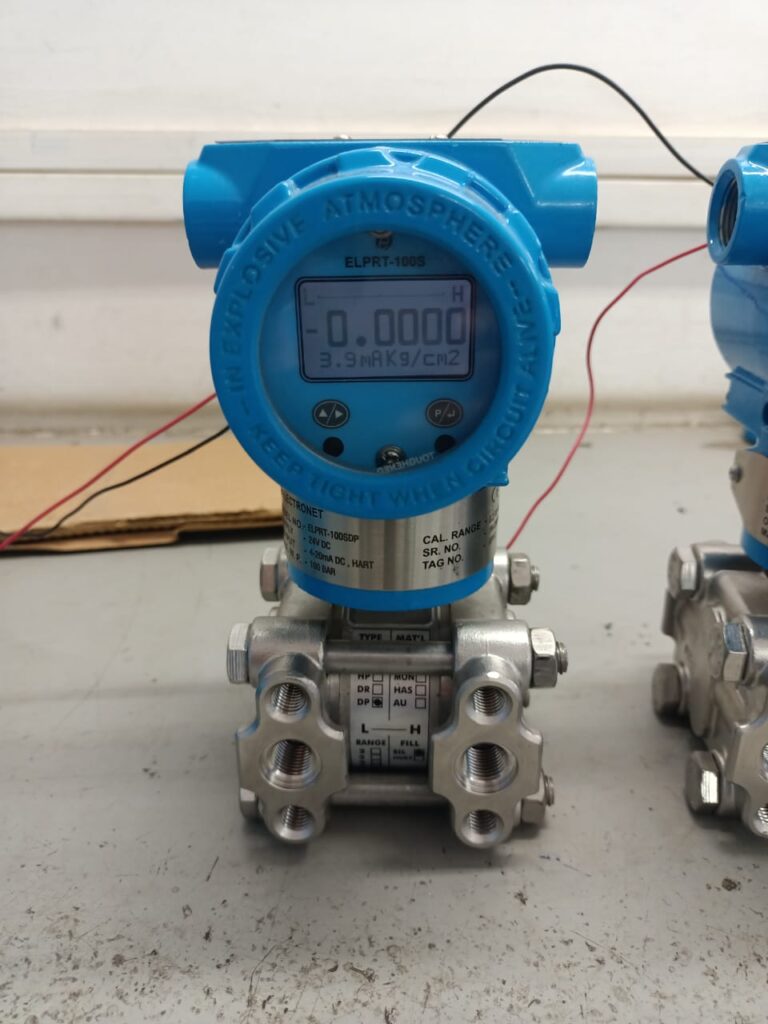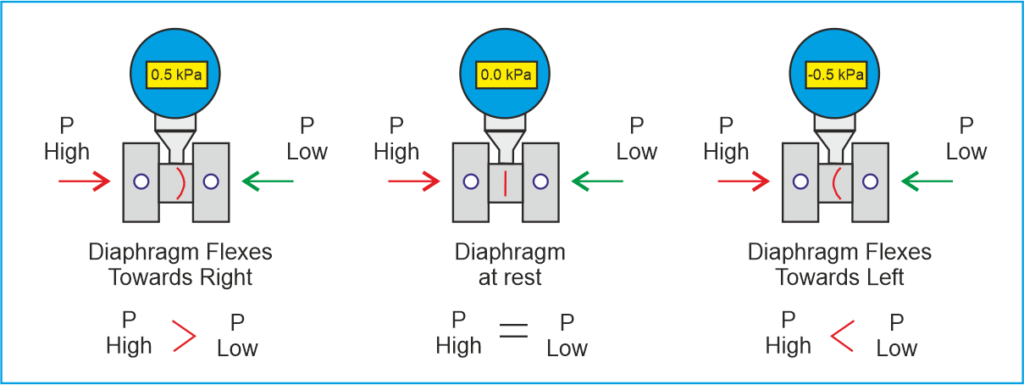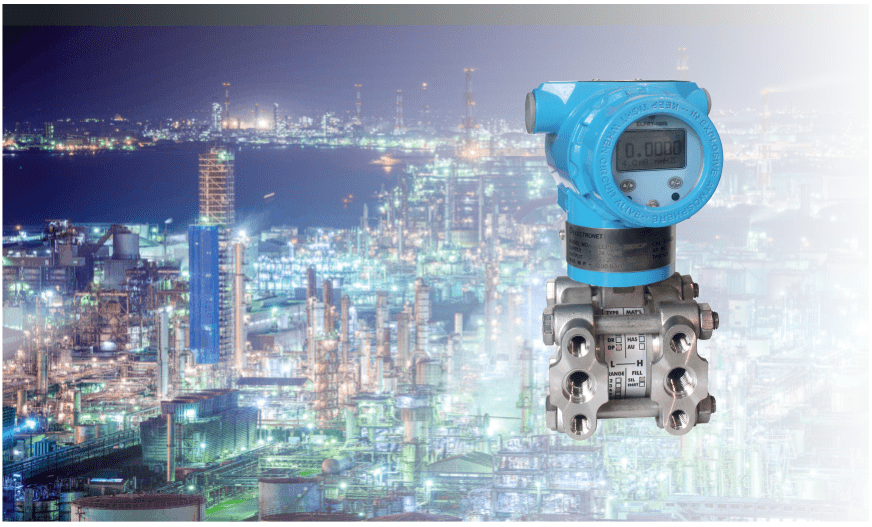Hello, friends! I hope you’re all doing well.
Welcome to another informative article on instrumentation. In this post, we learn about Basics of Differential Pressure Transmitters, also known as DPTs.
Table of Contents
ToggleBasics of Differential Pressure Transmitter
Differential Pressure Transmitters have become one of the most widely used pressure measuring instruments in various industries. As the name suggests, these transmitters are designed to measure the difference in pressure between two points.
To fully understand the concept of differential pressure transmitters, Lets learn the fundamentals of differential pressure itself.
What is differential pressure?
Differential pressure, also known as DP or ΔP, refers to the pressure measured between two distinct points. It plays a vital role in both domestic and industrial applications, particularly in flow measurement.
DP measurement provides valuable information about parameters such as flow rate, level, density, viscosity, and temperature.
In flow measurement, primary and secondary elements are employed. The primary element, such as an orifice, venturi, or Pitot tube, generates a pressure difference as the fluid flows through the system.
The secondary element, which is the differential pressure transmitter, measures the pressure difference created by the primary element. It is crucial for the DP measurement to remain unaffected by changes in fluid pressure, temperature, and other properties like ambient temperature.
Differential pressure transmitters provide an electrical signal output, commonly a 4-20mA signal. However, they can also give digital communication protocols such as HART, Profibus Fieldbus, Modbus, and more, enabling advanced control and monitoring capabilities.
What is a Differential Pressure Transmitter?
A differential pressure transmitter measures the pressure difference between two distinct points and converting it into an electrical signal.
The transmitter is typically comprised of two pressure sensing elements located at the bottom, along with the electronics circuitry positioned at the top.
The device features two pressure ports labeled as “High” and “Low” to facilitate accurate pressure measurement and calculation of the pressure differential.
Please refer below photo.
Construction of differential pressure transmitter
The differential pressure transmitter consists of three primary units:
1) Pressure Sensing Elements: These elements are responsible for detecting and measuring the pressure difference between the high and low pressure points. They convert the physical pressure into an electrical signal.
2) Electronic Circuit: The electronic circuitry of the transmitter processes and amplifies the electrical signal received from the pressure sensing elements. It performs necessary calculations and adjustments to ensure accurate measurement and transmission of the pressure differential.
3) 4-20mA Current Transmitter: The output of the differential pressure transmitter is typically a 4-20mA current signal. This current signal represents the measured pressure difference and is transmitted to control systems, data loggers, or other devices for further processing and analysis.

Pressure sensing element
In a differential pressure transmitter, the two pressure sensing elements, typically marked as “High” and “Low,” are positioned at the bottom of the device. One of the commonly used pressure sensing elements is a diaphragm.
The diaphragm is situated between the two pressure sensing elements and acts as a flexible membrane. When pressure is applied between the high and low pressure points, the diaphragm deflects or deforms accordingly.
This deflection of the diaphragm is then converted into an electrical signal using various sensing techniques such as strain gauges, capacitance, or other sensor technologies.
The sensing mechanism, whether it be strain gauges or capacitance, detects the changes in the diaphragm’s shape or displacement and translates it into an electrical signal.
This electrical signal represents the differential pressure being measured and is further processed and transmitted by the transmitter for monitoring, control, or recording purposes.
Electronic Circuit
The electrical signal produced by the sensor in the differential pressure transmitter is typically a low-voltage signal, often in millivolts, which requires amplification and conversion to a 4-20mA current.
The electronic circuitry responsible for these tasks is located on the upper side of the differential pressure transmitter, facilitating the necessary signal processing and output generation.
4-20mA Current Transmitter
The 4-20mA electrical signal generated by the differential pressure transmitter is crucial for displaying the pressure measurement or transmitting it to other units such as PLCs and closed-loop controllers.
This unit ensures that the signal is converted into the desired 4-20mA range, where the lower range corresponds to 4mA and the upper range corresponds to 20mA.
By converting the differential pressure into a linear range of 4-20mA, accurate and standardized measurement and control can be achieved.
Operation of Differential Pressure Transmitter
In modern differential pressure transmitters, the diaphragm serves as the primary pressure sensing element.
One side of the diaphragm is exposed to pressure from the “high” port, while the other side is exposed to pressure from the “low” port.
This differential pressure across the diaphragm is crucial for accurate pressure measurement and signal generation in the transmitter.

- When Pressure at the “H” port greater than the “L” port: Output moves towards 20mA.
- When Pressure at the “H” port equal to the “L” port: Output remains at 4mA.
- When Pressure at the “H” port less than the “L” port: Output moves towards 4mA.
Industrial applications of Differential Pressure Transmitters
There are many industrial applications where DPT is widely used like:
- Differential pressure transmitters are extensively utilized in the oil and gas industry to measure the flow of oil and gas through pipelines.
- Water treatment plants rely on differential pressure transmitters to monitor and control the flow of water during various treatment processes.
- Differential pressure transmitters play a crucial role in ensuring efficient operation and accurate flow measurement in sprinkler systems for irrigation or fire protection.
- By monitoring the pressure drops across valves, differential pressure transmitters help identify any abnormalities or blockages in the system, ensuring smooth operation and preventing potential issues.
- Pump control and monitoring systems incorporate differential pressure transmitters to maintain optimal pressure levels and monitor the performance of pumps in industrial processes.
I trust that you have found all the fundamental information about the “DPT” or differential pressure transmitter. If you have any further inquiries, kindly leave a comment below.
Should you be interested in learning about practical PLC programming for DPT, please feel free to comment below this article.
Thank you!


1 Comment